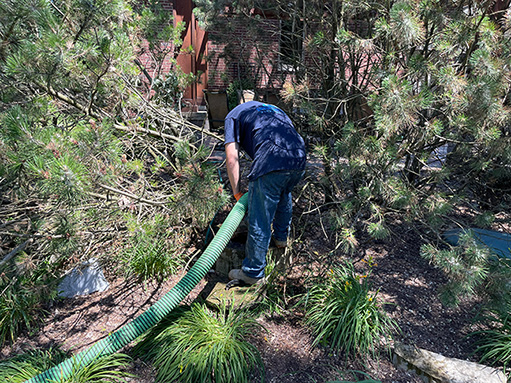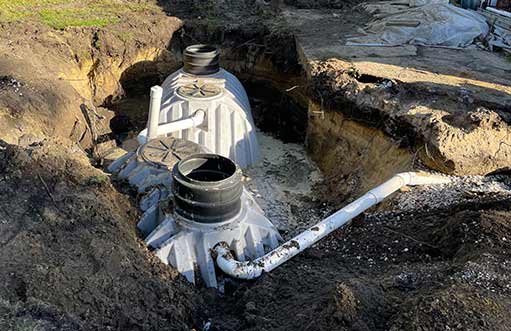
Septic tanks are onsite wastewater treatment systems found in homes without centralized wastewater management systems found in most cities. Septic tanks are usually used in rural settings, isolated homesteads, or the suburbs, notes the Lone Eagle Property Management team.
They are very effective at treating wastewater naturally but are also very fragile. The septic tank’s smooth function and longevity depend on timely system maintenance by its owner.
If there is a septic tank on your Chicagoland property, how should you maintain it to ensure that the soil and groundwater are not polluted by your home’s wastewater management system?
What you should know about septic tank damage and repair
Common problems that can happen to your septic system include;
Tree root damage
External pressure by plant roots can crack the septic tank. If this happens, wastewater will escape from the tank into the surrounding soil.
Damaged baffle or dip pipe
These internal components filter out waste and keep it from leaving the tank. If they are damaged, solid waste will enter the outlet pipe.
Fractured septic tank
This usually happens due to localized ground movements, often due to heavy vehicles being driven over the top of the tank.
Tank pops out of the ground
If there is a sudden increase in groundwater, the pressure from this water can force the tank out of the ground.
You can avoid most of these issues if you are careful about how you use your septic tank. Also, it is essential to inspect your septic tank on a schedule and pump it at the right time.
Avoiding septic tank damage
Common mistakes that damage a septic system or interfere with its function include:
Improper disposal of waste
Grease, wipes, paper towels, diapers, feminine hygiene products, condoms, dental floss, coffee grounds, cat litter, pharmaceuticals, cigarette butts, gasoline, anti-freeze, pesticides, paint and paint thinners should never enter the septic tank.
Overwhelming the system with water
The tank will be flooded if you use too many plumbing fixtures and appliances at the same time.
Protect the drain field from damage
Don’t drive or park vehicles or heavy equipment on the drain field. Don’t plant trees close to the drain field, and never dig in the drain field.
Direct water away from the drain field
If you have roof gutters, sump pumps and other rainwater drainage systems in your home, ensure they do not drain into the drain field.

Septic tank inspection and maintenance
Your septic system should be inspected every three years. This inspection must be done by a septic service provider. Among other things, the inspector will examine the tank for signs of leakage and damage. They will also record the amount of scum and sludge inside the tank.
It is essential to write down the sludge and scum levels recorded by the inspector. These records help you keep track of the tank to know when it is time to pump the system. Ideally, your septic tank should be pumped if:
- 25% of the liquid depth inside the tank is made up of sludge and scum
- The scum layer is up to 6 inches from the bottom of the outlet
- The sludge layer is within 12 inches of the outlet.
In addition to scum and sludge records, the inspector will make a record of completed repairs and the overall condition of your tank. If any problems are detected during the inspection, he or she will recommend repairs. These will usually be done by another professional.
Pumping the septic tank
Pumping is the process of removing accumulated scum and sludge, plus effluent, from the tank. To pump the tank, a specialized truck fitted with a high-capacity vacuum is used. The septic tank is accessed by inserting the vacuum hose into the tank through its lid.
Once the hose is in place, the process of “liquid waste extraction“ commences and does not stop until all the layers of scum, sludge and effluent inside the tank are removed completely. After the tank is emptied, the technician inspects it for signs of wear or damage.
How often should you pump your septic tank? There is no fixed interval for doing this; it depends on how quickly the scum and sludge layers inside the tank reach the maximum accepted levels. The following factors play a role in the frequency of septic tank pumping:
- Household size
- The volume of wastewater produced
- The size of the tank
- The design and age of the system
- How the septic system is used
To conclude, a delay in maintaining and having your septic tank pumped out at the right time can result in a slew of problems in your Chicago home. To avoid sewage backup in the house, contamination of nearby water sources and increased maintenance costs, it is vital to do these maintenance steps at the right time.

